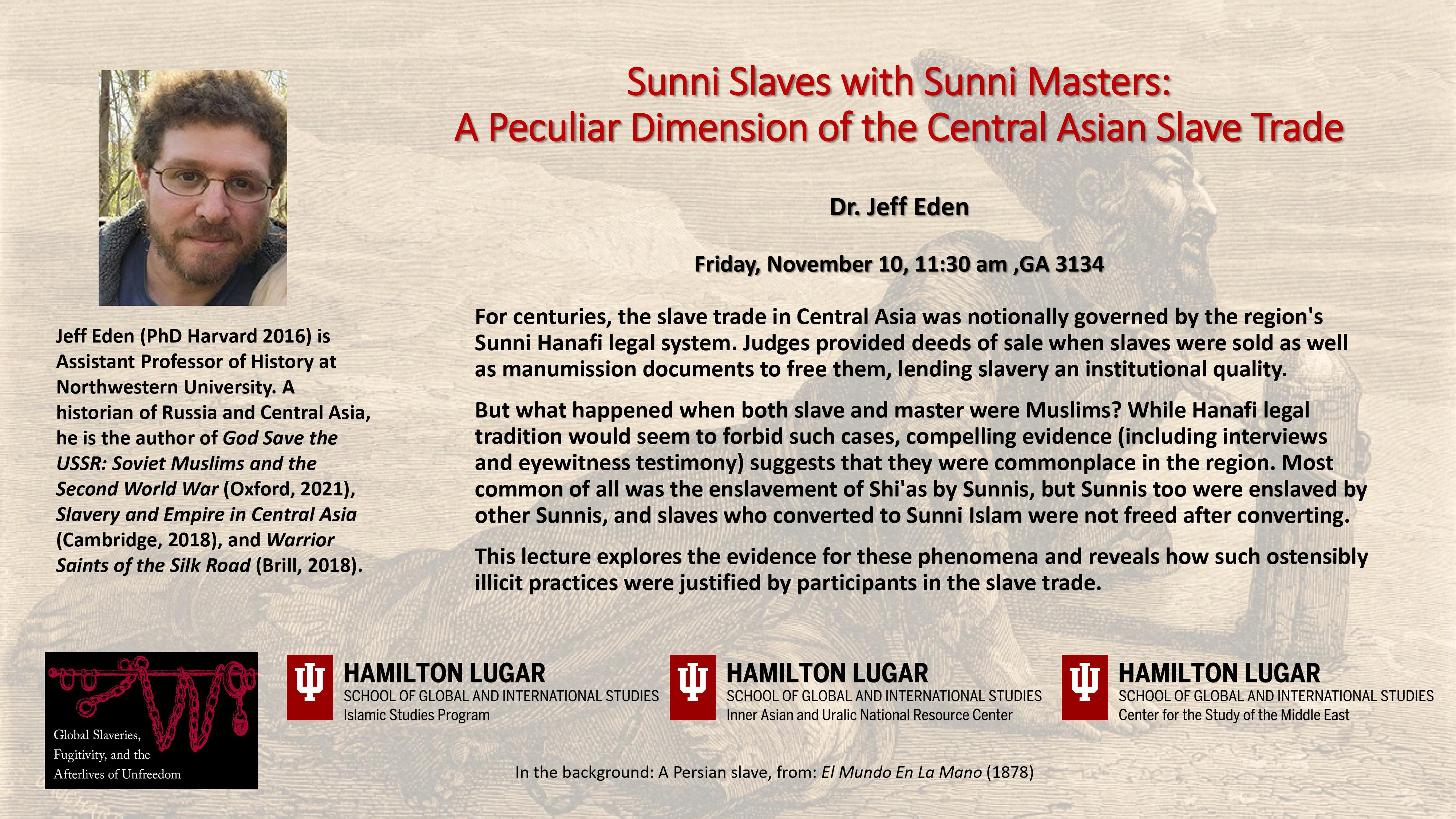Lecture Summary
For centuries, the slave trade in Central Asia was notionally governed by the region's Sunni Hanafi legal system. Judges provided deeds of sale when slaves were sold as well as manumission documents to free them, lending slavery an institutional quality.
But what happened when both slave and master were Muslims? While Hanafi legal tradition would seem to forbid such cases, compelling evidence (including interviews and eyewitness testimony) suggests that they were commonplace in the region. Most common of all was the enslavement of Shi'as as Sunnis, but Sunnis too were enslaved by other Sunnis, and slaves who converted to Sunni Islam were not freed after converting.
This lecture explores the evidence for these phenomena and reveals how such ostensibly illicit practices were justified by participants in the slave trade.



